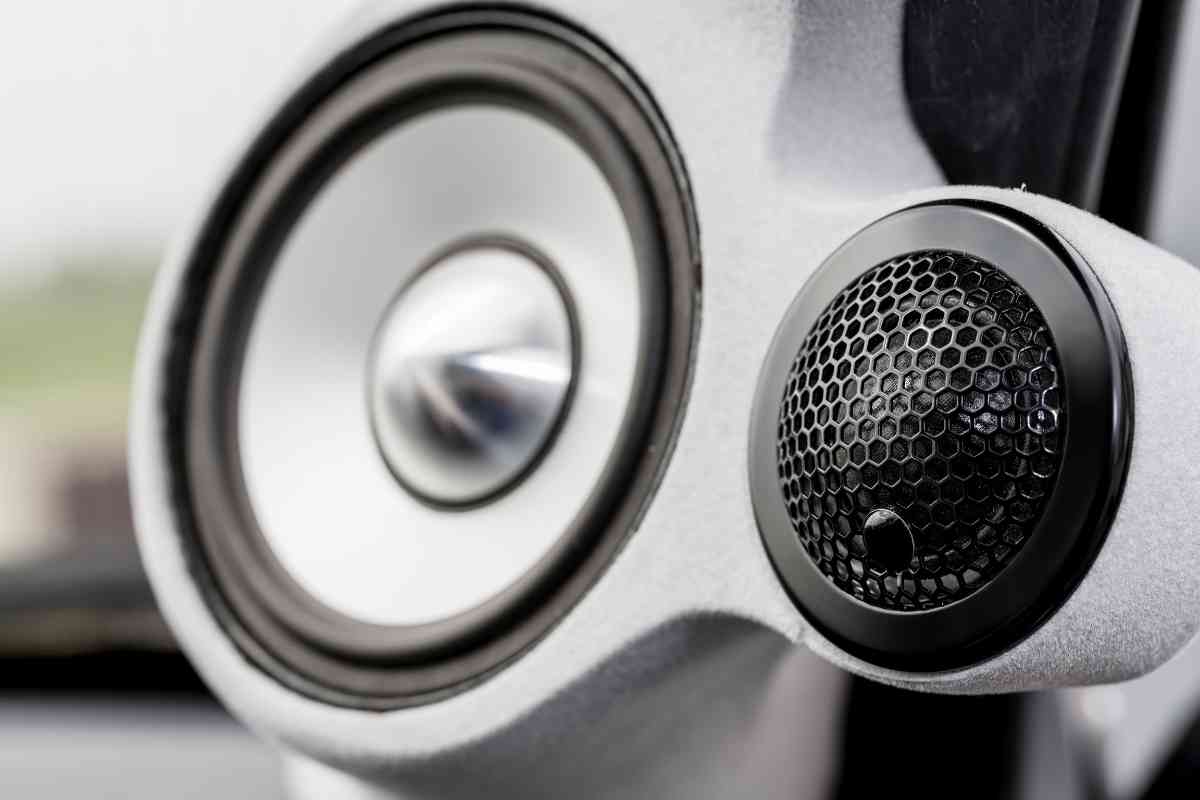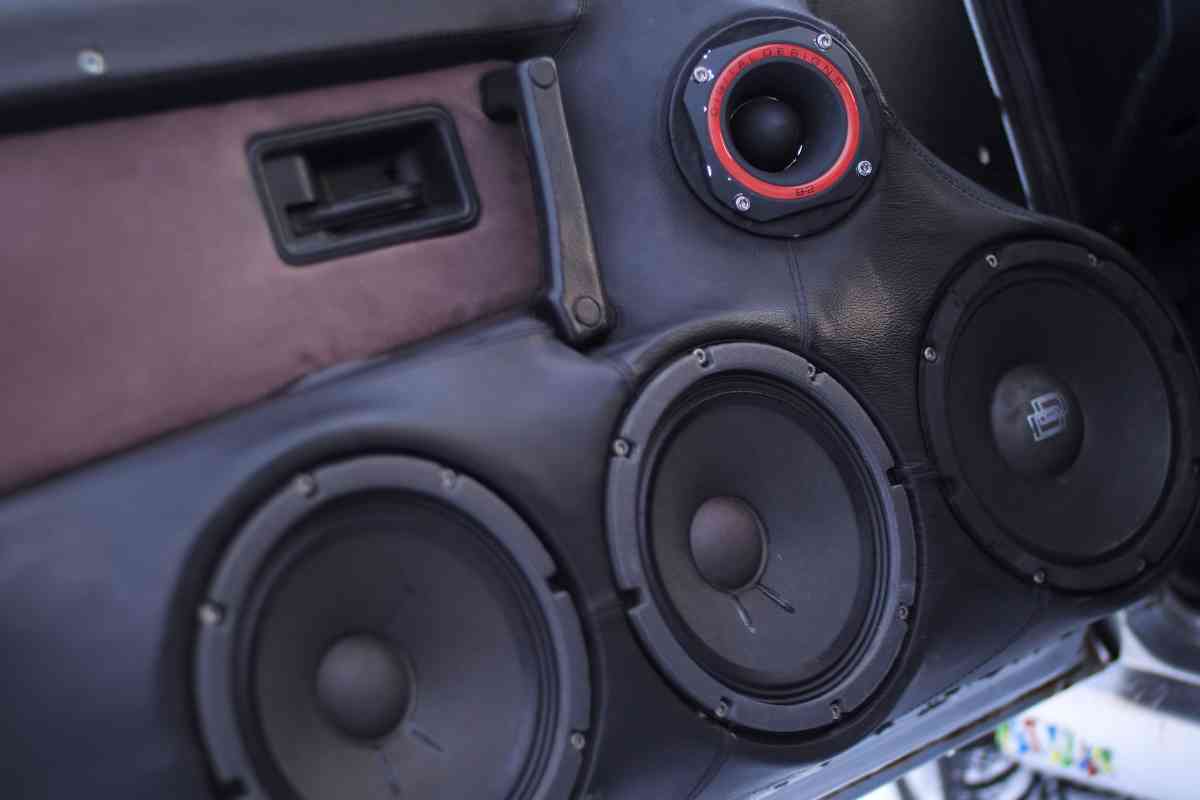When upgrading your car’s audio system, one crucial consideration is how many speakers you can connect to your car’s head unit.
Car owners always seek to find better sound quality and performance. A car stereo typically supports 4-ohm speakers. Adding 6 or even 8 speakers to a car stereo is possible. So, how many speakers can you connect to your head unit?
To determine the number of speakers that can be connected, it is crucial to understand the power capabilities of the head unit and get the appropriate speakers for the car stereo.
This article will examine how many speakers connect to a car’s head unit and other related questions.
How Many Speakers Can You Connect To Your Head Unit?
Unfortunately, the maximum number of speakers you can connect to your head unit is not specified and vary depending on your specific system requirements.
The built-in amplifier of the head unit has limitations in powering additional speakers. Also, the number of speakers each unit can support differs. While most head units can power up to 4 speakers, some may support more or fewer.
To get an accurate answer, you must know the model of your head unit and the car you intend to install it.
The best bet is to contact the manufacturer or refer to the owner’s manual to determine the number of speakers your head unit can accommodate.
Most head units can power four channels (2 front, 2 back), so your head unit likely falls into this category. However, it’s always a good idea to recheck for confirmation.
But you can still connect and install external speakers to your car, although it may be prone to complications and needs the expertise to get it done right.
How To Connect Extra Speakers To Stereo

To connect additional speakers to your stereo, you can use additional equipment, such as an amplifier, and tap into the existing speaker wire. Or, you can change the head unit.
If you want to connect extra Speakers using an Amplifier, ensure the amplifier has available ports and connect your speaker wire to the vacant ports on the amplifier.
You’ll need to get creative if there are no available ports. The safest and most straightforward approach is to use the daisy chain method.
Run a two-core speaker cable from the amplifier output to the first set of speakers, then connect another wire from the first set of speakers to the second.
Another way to connect extra speakers is to replace your head unit. Look for a head unit that supports more speakers than your current one. Also, ensure that you choose the appropriate size.
What To Consider While Connecting Car Speakers To A Stereo?
When connecting car speakers to your stereo, there are two methods: series and parallel. It’s essential to consider certain factors when deciding how many speakers you can connect to using the different wiring methods for multiple speakers.
1. Series Connection
The impedance load (measured in ohms) increases when speakers are connected in series. Adding more speakers to the stereo raises the impedance, decreasing the speaker output.
Keeping the impedance below 16 ohms is advisable to prevent this, as most amplifiers are not designed to handle higher loads.
It’s crucial to understand that speakers with a higher impedance produce lower output, reducing sound quality and distortion in the music system. To avoid this, find out the power capacity of the amplifier for each speaker.
How to Wire a 4-Channel Amp to 6 Speakers using a Series Connection
Wiring in series is an alternative and safer method to connect a 4-channel amp to 6 speakers.
Although it may not provide the best sound quality, it offers increased safety. Let’s see how to wire a 4-channel amp to 6 speakers in series.
When you wire two 4-ohm speakers in series creates an 8-ohm load on the head unit. This method carries less risk compared to wiring in parallel.
You connect two speakers in series on one channel, and then four are connected across two channels.
The remaining two speakers can be connected to the remaining two channels. This allows you to connect six speakers to a 4 channel amplifier.
2. Parallel Connection
When connecting car speakers in parallel, there are specific considerations to remember. Unlike series connections, the parallel connection decreases impedance levels differently.
As the number of speakers increases in parallel, the impedance level decreases, resulting in increased acoustical output.
However, the number of speakers connected in parallel depends on the minimum load impedance.
Typically, it is recommended to maintain a load impedance of around 2 ohms to ensure the amplifier can handle speakers at a low impedance.
If you connect more than 4 speakers in parallel, they will put a small load on the stereo.
Unlike in series connection, where the resistance of speakers adds up and may exceed the stereo’s ohm limit, a parallel connection reduces the overall resistance of the speakers. This allows for more speakers to be connected in parallel.
How to Wire a 4-Channel Amp to 6 Speakers Using Parrell Connection
When you connect two 4-ohm speakers in parallel, they create a 2-ohm load on your head unit.
You can connect four speakers across two channels by connecting two speakers to one channel.
Then wire the four speakers across two channels; the remaining two can be connected to the other two channels. This allows you to connect six speakers using four channels.
Connecting two speakers per channel is safe for your amplifier. However, connecting four speakers to two channels and playing music at total volume can put a heavy 2-ohm load on those channels and cause your stereo to heat up.
This is more likely to happen when listening at high volumes for extended periods. Your amplifier should remain safe if you listen at average volumes or play at high volumes for short durations.
Wiring six speakers to four channels in parallel allows you to achieve full power and high-quality sound.
Still, it’s crucial to avoid extended high-volume use. Running your stereo hot for prolonged periods can damage your sound equipment.
How Many Speakers Can Work With With A 4-Channel Amp?
How many speakers you can use with a 4-channel amp depends on the unit type and type of connection.
Generally, for Parallel speaker connections, you can connect two 4 ohm speakers per channel, totaling eight 4 ohm speakers, to an amp rated at 2 ohms per channel.
Also, you can connect two 8 ohm speakers per channel, totaling eight 8 ohm speakers, to an amp rated at 4 ohms for each channel.
On the other hand, for Series-parallel speaker connections, You can connect four 8 ohm speakers per channel, totaling sixteen 8 ohm speakers, to an amp stable at 8 ohms per amp channel.
Also, you can connect four 4 ohm speakers per channel, totaling sixteen 4 ohm speakers, to an amp stable at 4 ohms per amp channel.
You can connect eight 4 ohm speakers per channel, totaling thirty-two 4 ohm speakers, to an amp stable at 2 ohms per channel.
However, there is a catch. Each speaker will receive a portion of the amp’s power output based on the total Ohms load used.
Consequently, the available power will be shared among the speakers when multiple speakers are connected.
This will also impact the maximum volume achievable for each speaker, as less power will be available. So, it’s best to have more amplifier channels available.
Frequently Asked Questions
Is It Better To Connect Speakers In Parallel And Not In Series?
Yes, speakers wired in parallel offer several advantages that can enhance your audio experience.
One key advantage is the preservation of sound quality. Each speaker receives full power from the amplifier in parallel wiring, ensuring optimal performance.
Each speaker can operate at its intended impedance, allowing for better frequency response and accurate sound reproduction.
Parallel wiring also offers greater flexibility in terms of speaker configuration. It allows you to add more speakers to your setup without significantly affecting the impedance load seen by the amplifier.
This is particularly beneficial when expanding your sound system or creating a multi-room audio setup.
Furthermore, parallel wiring minimizes the risk of overpowering the amplifier. Distributing the load across multiple speakers reduces the power demand on each speaker. This can prevent distortion and potential damage to both speakers and amplifiers.
It is important to note that parallel wiring does have its limitations. It may require careful consideration of the amplifier’s power output and the total impedance load to ensure compatibility.
Additionally, the wiring complexity may increase as more speakers are added. However, it is essential to understand the specific requirements of your audio system and ensure proper matching of speakers and amplifiers to achieve optimal results.
Is It Necessary to Buy an Amp?
No, it is not always required to have an external amplifier. While an amplifier is not necessary, it can help improve the sound of your system.
However, the built-in amplifier with most factory head units is sufficient for most people.
It can power a basic system with two front and two rear speakers, and its sound quality is decent.
But, if you want to enhance your system by adding more speakers or a subwoofer, then an external amplifier becomes essential.
Can You Use Up To 6 Speakers With A 4-Channel Amp?
Certainly! In numerous scenarios, it is possible to use six speakers with a 4 channel amp.
You may connect the speakers directly to the amp. But, a speaker impedance adapter may be necessary for others to ensure optimal functionality.
The specific connection and wiring configuration available is contingent upon the minimum Ohms rating per channel of your amplifier.
You will need to know the speakers used, such as single cone or 2-way and 3-way speakers equipped with a tweeter and woofer.
You must also consider the impedance of the speakers you intend to connect.
Conclusion
When faced with the question of “how many speakers can you connect to your head unit” it is vital to note that there is no maximum number of speakers you can connect to your head unit. It is simply about the type of stereo.
While most head units can power a basic setup of four speakers, some units can accommodate additional speakers or require external amplification for optimal performance.
It is crucial to consider the specifications of your head unit, such as power output and impedance compatibility, as well as the overall requirements of your audio system.
Additionally, seeking professional advice or referring to the manufacturer’s guidelines can help you make informed decisions when connecting multiple speakers.
Related:

